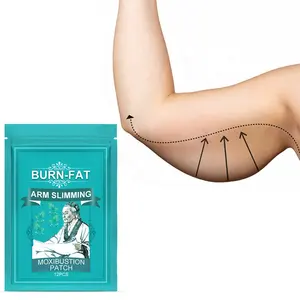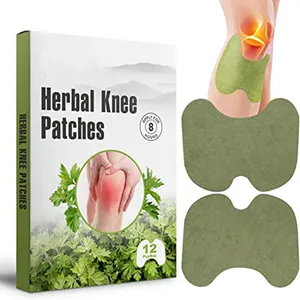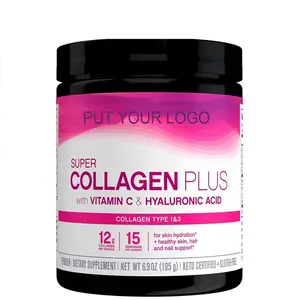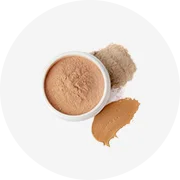Phổ biến trong ngành của bạn






Nhựa Windproof bơm lại nhẹ hơn thuốc lá máy bay phản lực ngọn lửa ngọn đuốc nhẹ hơn
16.546 ₫ - 25.455 ₫
Đơn hàng tối thiểu: 2 Cái







Màu xanh lá cây hoạt động bằng tay thổi Súng cắm trại ngọn đuốc khí đi bộ đường dài ngọn lửa súng
32.582 ₫ - 40.219 ₫
Đơn hàng tối thiểu: 200 Cái







Cổ điển súng nhẹ hơn ngọn lửa màu đỏ ngọn đuốc nhẹ hơn mini phong cách quân sự đồ chơi ngoài trời nhẹ hơn
30.291 ₫ - 45.819 ₫
Đơn hàng tối thiểu: 50 Cái







Xách tay sưởi ấm ngọn lửa khí ngọn đuốc đầu đốt máy bay phản lực lửa nhẹ hơn Hàn ngọn đuốc
48.364 ₫ - 53.455 ₫
Đơn hàng tối thiểu: 200 Cái





Hot Bán Mô Hình Súng Cầm Tay Đôi Jet Flame Gas Bơm Lại Torch Nhẹ Hơn Cho BBQ Nấu Ăn
Sẵn sàng vận chuyển
66.182 ₫ - 76.364 ₫
Đơn hàng tối thiểu: 5 Cái
Vận chuyển mỗi chiếc: 112.000 ₫







Alonefire Đèn Pin Chiến Thuật 501B XM-L2 Đèn Đi Bộ Đường Dài Du Lịch 20Mm LED T6 U3 Đèn Pin Chống Nước Ngoài Trời Pin 18650
Sẵn sàng vận chuyển
234.691 ₫ - 267.019 ₫
Đơn hàng tối thiểu: 10 Bộ
Vận chuyển mỗi chiếc: 85.273 ₫




Heytorch Tùy Chỉnh Làm Việc Ánh Sáng Torch Xe Khẩn Cấp Đèn Pin Búa Đèn Pin LED Torch Đèn Pin Torche
Sẵn sàng vận chuyển
30.546 ₫ - 38.691 ₫
Đơn hàng tối thiểu: 10 Cái
Vận chuyển mỗi chiếc: 121.419 ₫






Công suất cao đèn pin lumens cao 100000 linternas LED không thấm nước mạnh mẽ chiến thuật đèn pin ngọn đuốc
Sẵn sàng vận chuyển
17.564 ₫ - 42.000 ₫
Đơn hàng tối thiểu: 2 Cái
Vận chuyển mỗi chiếc: 112.255 ₫






IP68 ABS Nhôm Chuyên Nghiệp LED Sạc Không Thấm Nước Dưới Nước Scuba Lặn Đèn Pin Ngọn Đuốc Dưới Nước Chuyên Nghiệp
Sẵn sàng vận chuyển
81.455 ₫ - 96.728 ₫
Đơn hàng tối thiểu: 10 Cái
Vận chuyển mỗi chiếc: 69.746 ₫






Cảnh Báo An Toàn Ban Đêm Ba Lô Zipper Light Mini Đèn Pin Led Cho Chạy Bộ
10.437 ₫ - 14.000 ₫
Đơn hàng tối thiểu: 500 Cái






Công Suất Cao Đèn Pin 2000 Lumen LED Zoom Tập Trung Điện Hiển Thị Cầm Tay Loại Ngọn Đuốc C Có Thể Sạc Lại Ánh Sáng Đèn Flash Cho Cắm Trại
83.237 ₫ - 99.782 ₫
Đơn hàng tối thiểu: 2 Cái
Vận chuyển mỗi chiếc: 229.855 ₫






5 Wát 7 Wát 9 Wát 10 Wát Pocket Led Đèn Pin Với Hộp Màu Giá Rẻ Nhựa Mini Torch Ánh Sáng Khẩn Cấp Nhỏ Aa Pin Di Động Ngọn Đuốc
5.600 ₫ - 6.364 ₫
Đơn hàng tối thiểu: 3000 Cái




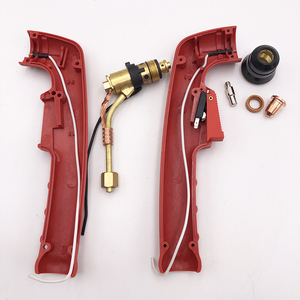

Đầu Cắm Plasma Cầm Tay OEM Trafimet S45 PF0125, Cắt Plasma
Sẵn sàng vận chuyển
592.837 ₫
Đơn hàng tối thiểu: 1 Cái
Vận chuyển mỗi chiếc: 152.728 ₫





Butan Micro Torch Lighter / Micro Gas Hàn Ngọn Đuốc/Micro Torch
127.273 ₫ - 203.637 ₫
Đơn hàng tối thiểu: 1 Hộp các tông






Tốt Nhất Torch Ánh Sáng Dài Phạm Vi Đa Chức Năng Không Thấm Nước USB Có Thể Sạc Lại Siêu Sáng LED Mini Ánh Sáng Đèn Pin Ngọn Đuốc
25.455 ₫ - 38.182 ₫
Đơn hàng tối thiểu: 10 Hộp






Quà Tặng Khuyến Mãi Nhôm 12 Led Linterna Led Recargable Giá Rẻ Torch 12 Led Đèn Pin
Sẵn sàng vận chuyển
17.819 ₫ - 20.110 ₫
Đơn hàng tối thiểu: 2 Cái
Vận chuyển mỗi chiếc: 90.619 ₫






Bán Buôn Kim Loại Nhôm 9 Led Mini Torch Với Biểu Tượng Tùy Chỉnh LED Đèn Pin
8.910 ₫ - 17.310 ₫
Đơn hàng tối thiểu: 500 Cái






Sofirn Đèn Pin Led Lặn Đi Săn Dưới Nước SD01 6000 Lumen XPL Đèn Lặn 18650
Sẵn sàng vận chuyển
992.727 ₫ - 1.018.182 ₫
Đơn hàng tối thiểu: 10 Cái
Vận chuyển mỗi chiếc: 204.400 ₫






Đèn COB Đèn Pin Sạc Siêu Sáng 4 Chế Độ Chống Nước Có Thể Thu Phóng Siêu Sáng Đèn Led Sạc Lại Khẩn Cấp
38.182 ₫ - 198.546 ₫
Đơn hàng tối thiểu: 20 Cái


Tùy Chỉnh Logo Khuyến Mại Pvc Flat 2 LED Flashlight Torch Với Nam Châm
8.910 ₫ - 14.000 ₫
Đơn hàng tối thiểu: 3000 Cái






Pin Tích Hợp Chiến Thuật Siêu Sáng Đèn Pin Sạc 5 Chế Độ USB Có Búa An Toàn Cho Cuộc Phiêu Lưu Ngoài Trời Đèn Pin LED
173.091 ₫ - 224.000 ₫
Đơn hàng tối thiểu: 2 Cái






Tùy chỉnh Windproof Torch Ba thẳng tuôn ra khí Cigar nhẹ hơn với Cigar Cutter
96.728 ₫ - 114.546 ₫
Đơn hàng tối thiểu: 20 Cái






Lotos Nhà Máy Giá Thấp Plasma Cutter Đuốc Cho Ltp5500d Cnc Plasma Máy Cắt Hàn Torch Phụ Kiện
Sẵn sàng vận chuyển
3.563.636 ₫ - 3.818.181 ₫
Đơn hàng tối thiểu: 1 Bộ
Vận chuyển mỗi chiếc: 651.891 ₫






Dây Cáp Hàn Siêu Mềm TIG SR26 Với Đầu Nối Euro
Sẵn sàng vận chuyển
849.164 ₫ - 1.127.127 ₫
Đơn hàng tối thiểu: 1 Cái
Vận chuyển mỗi chiếc: 652.909 ₫






5W cảm ứng ánh sáng dẫn đèn pin ngọn đuốc với nam châm 2pcs
Sẵn sàng vận chuyển
585.455 ₫ - 916.364 ₫
Đơn hàng tối thiểu: 1 Gói
Vận chuyển mỗi chiếc: 1.334.327 ₫


Nhận Sao Hàn Bán Buôn Hàng Đầu Nối Cho WP-26 Tig Torch Với Đường Kính 8/10 Mét
12.728 ₫ - 24.182 ₫
Đơn hàng tối thiểu: 100 Cái
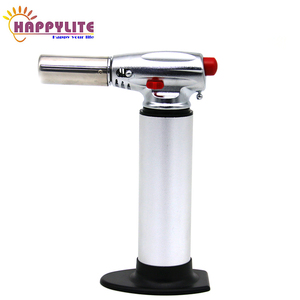





Hot Bán Chất Lượng Tốt Bơm Lại Butan Gas Torch Và Torch Lửa Gun
25.455 ₫ - 101.819 ₫
Đơn hàng tối thiểu: 20 Cái






Xách Tay CNC Oxy Axetylen Torch Cho Máy Cắt Cnc
Sẵn sàng vận chuyển
1.120.000 ₫ - 1.960.000 ₫
Đơn hàng tối thiểu: 1 Cái
Vận chuyển mỗi chiếc: 774.837 ₫






USA kho kongbo Kẽm hợp kim cơ thể sợi màu xanh lửa jocon máy bay phản lực butan nhẹ hơn Torch
Sẵn sàng vận chuyển
106.910 ₫ - 127.273 ₫
Đơn hàng tối thiểu: 12 Cái
Vận chuyển mỗi chiếc: 180.473 ₫





RichFire Đèn Pin Led Chiến Thuật 1000 Lumens Mới Đèn Pin Sạc Được
Sẵn sàng vận chuyển
165.455 ₫ - 241.819 ₫
Đơn hàng tối thiểu: 1 Đơn vị
Vận chuyển mỗi chiếc: 537.091 ₫






X5 Mini Từ Ngoài Trời Không Thấm Nước IP65 Ánh Sáng Trắng Đa Chức Năng Ngân Hàng Điện Đèn Nhỏ LED Đèn Pin Sạc Torch
211.273 ₫ - 229.091 ₫
Đơn hàng tối thiểu: 40 Cái






Hợp kim nhôm Mini torch 625nm 9 LED tĩnh mạch Finder ánh sáng màu đỏ chùm Led đèn pin
43.273 ₫ - 76.364 ₫
Đơn hàng tối thiểu: 2 Bộ






Đèn Pin LED Cầm Tay Bằng Nhôm Đèn Pin Mạnh Mẽ Có Kẹp Đèn Bút Mini Pin Khô Có Thể Phóng To
Sẵn sàng vận chuyển
29.273 ₫ - 32.582 ₫
Đơn hàng tối thiểu: 2 Cái
Vận chuyển mỗi chiếc: 60.837 ₫






Đèn Pin ykui yk100h YK-100 Đèn pin yk100 YGX-100 ygx100 Đèn pin Plasma ygx yk100 Đèn pin Máy cắt Plasma CNC
1.069.091 ₫
Đơn hàng tối thiểu: 2 Cái






ABS 6pcs COB LED Keychain Mini Đèn pin 9V Pin Plug-in loại đèn pin
Sẵn sàng vận chuyển
14.510 ₫ - 20.364 ₫
Đơn hàng tối thiểu: 1 Cái
Vận chuyển mỗi chiếc: 135.419 ₫






Tương Thích Binzel 15AK MIG CO2 Hàn Torch Với Chiều Dài Cáp 3M Làm Mát Bằng Không Khí Hàn Gun 3Meter 15AK Complete Torch
310.546 ₫ - 407.273 ₫
Đơn hàng tối thiểu: 5 Cái






Đèn Pin LED Đèn Pin Siêu Sáng Có Thể Sạc Lại Với Đèn Làm Việc COB Đèn Pin Chiến Thuật 7 Chế Độ Chống Nước Cho Cắm Trại Ngoài Trời
Sẵn sàng vận chuyển
116.837 ₫ - 130.582 ₫
Đơn hàng tối thiểu: 1 Cái
Vận chuyển mỗi chiếc: 242.073 ₫






Chất lượng cao treo tường sạc khách sạn Đèn pin khẩn cấp khách sạn phòng khách Torch
Sẵn sàng vận chuyển
104.364 ₫ - 114.546 ₫
Đơn hàng tối thiểu: 1 Cái
Vận chuyển mỗi chiếc: 182.764 ₫






Chuyên nghiệp ngọn đuốc chiến thuật Red/Green Dot Laser Sight Grip với tích hợp LED Đèn pin kết hợp phạm vi
278.728 ₫ - 406.764 ₫
Đơn hàng tối thiểu: 10 Cái
Các danh mục hàng đầu
Giới thiệu về ngọn đuốc
Ngày nay, ngọn đuốc không còn là điều mới mẻ đối với những người bình thường và không còn bị coi là điều cấm kỵ khi sử dụng. Nếu bạn đang tìm kiếm niềm vui áp chót đó, bạn phải kiểm tra sự bao la. Bộ sưu tập ngọn đuốc tại Alibaba.com. Những gợi cảm và cong. ngọn đuốc đáng giá từng xu và chắc chắn làm cho đêm đó trở nên đặc biệt đối với bạn. Những con búp bê này có ngoại hình giống như thật, bắt đầu từ tóc đến ngón chân theo mọi nghĩa.
Cho dù bạn là một người cô đơn đang tìm kiếm một người bạn đời như cuộc sống hay một cặp vợ chồng muốn thêm gia vị cho cuộc sống của họ, bạn đều có thể sử dụng chúng . ngọn đuốc để đốt cháy ngọn lửa đó. Những ngoạn mục. ngọn đuốc có thể tùy chỉnh theo mong đợi của bạn. Những điều tuyệt vời. ngọn đuốc có sẵn ở cả phiên bản dành cho nam và nữ và được làm từ silicone cấp y tế để sử dụng an toàn. Hãy sở hữu ngay bây giờ và tận hưởng một đêm đam mê và cháy bỏng.
Alibaba.com cung cấp những điều tuyệt vời này. ngọn đuốc ở mọi hình dạng cơ thể, kích thước và sắc tộc. Dù yêu cầu của bạn đối với. ngọn đuốc, bạn có thể tải tất cả chúng trên trang web. Những cái này. ngọn đuốc được tạo hình bởi những người thợ thủ công giỏi nhất và mọi chi tiết phức tạp đều được kiểm tra kỹ lưỡng. Những con búp bê này có mắt, tóc, móng tay và tất cả các bộ phận cơ thể khác tương tự như người thật.
Alibaba.com cung cấp nhiều loại. ngọn đuốc có thể giúp bạn mua các sản phẩm phù hợp với ngân sách và các yêu cầu khác của bạn. Các sản phẩm này an toàn để sử dụng, được chứng nhận và thân thiện với môi trường trong tự nhiên. Đơn đặt hàng OEM có sẵn trên các sản phẩm này.
Cho dù bạn là một người cô đơn đang tìm kiếm một người bạn đời như cuộc sống hay một cặp vợ chồng muốn thêm gia vị cho cuộc sống của họ, bạn đều có thể sử dụng chúng . ngọn đuốc để đốt cháy ngọn lửa đó. Những ngoạn mục. ngọn đuốc có thể tùy chỉnh theo mong đợi của bạn. Những điều tuyệt vời. ngọn đuốc có sẵn ở cả phiên bản dành cho nam và nữ và được làm từ silicone cấp y tế để sử dụng an toàn. Hãy sở hữu ngay bây giờ và tận hưởng một đêm đam mê và cháy bỏng.
Alibaba.com cung cấp những điều tuyệt vời này. ngọn đuốc ở mọi hình dạng cơ thể, kích thước và sắc tộc. Dù yêu cầu của bạn đối với. ngọn đuốc, bạn có thể tải tất cả chúng trên trang web. Những cái này. ngọn đuốc được tạo hình bởi những người thợ thủ công giỏi nhất và mọi chi tiết phức tạp đều được kiểm tra kỹ lưỡng. Những con búp bê này có mắt, tóc, móng tay và tất cả các bộ phận cơ thể khác tương tự như người thật.
Alibaba.com cung cấp nhiều loại. ngọn đuốc có thể giúp bạn mua các sản phẩm phù hợp với ngân sách và các yêu cầu khác của bạn. Các sản phẩm này an toàn để sử dụng, được chứng nhận và thân thiện với môi trường trong tự nhiên. Đơn đặt hàng OEM có sẵn trên các sản phẩm này.


